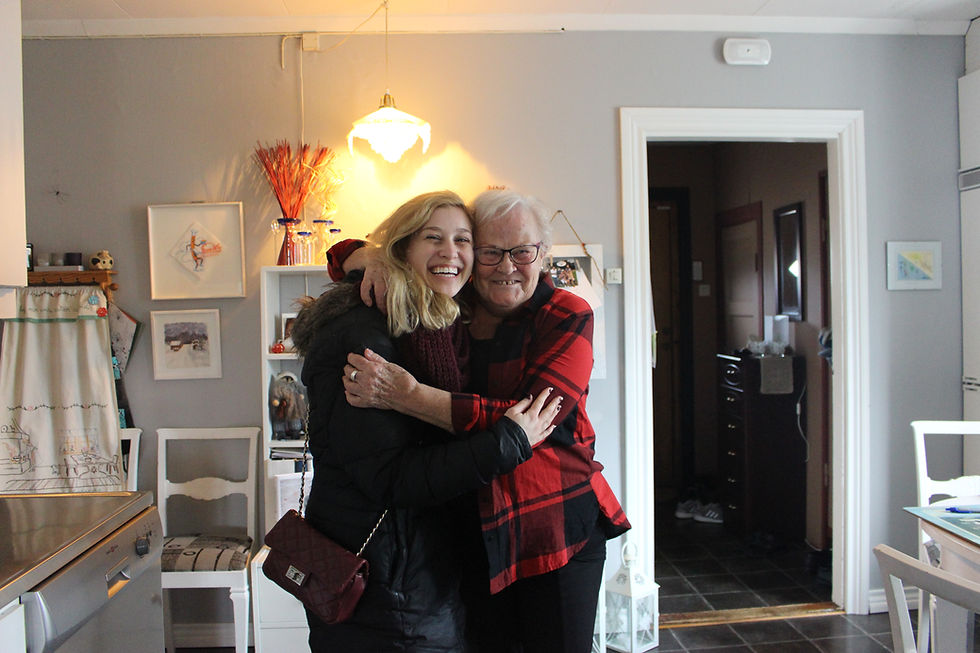The National WWII Museum
- michelleandersen7

- Jan 6, 2019
- 3 min read
Updated: Jan 13, 2019
"One cannot go to war and come back normal" -Richard Proulx, Infantryman, US Army

The World War II museum is ranked the #2 museum in the world. Tickets were a bit pricey, but the museum spreads over several buildings. Plus, they are working to expand. The first building featured a train that shared personal stories as we “headed into war.” Each visitor received a dog tag that would share a soldier’s story at interactive parts of the exhibit. We began our tour by watching the Beyond All Boundaries film narrated by Tom Hanks. The visuals were impressive with a 4D experience where the seats vibrated and film footage was shown over props. The story was touching, although tinged with nationalistic views.

The main exhibits we covered were the Campaigns of Courage, that described “how [American service members] overcame unprecedented challenges on multiple fronts to win victory in World War II.” The Road to Tokyo exhibit takes visitors through the historical context of alliances and notable leaders of the time. There are rooms dedicated to what a USS ship and a flight deck would have been like. Visitors land in the tropics and are forced to deal with the challenges of a different climate, disease, and an unknown terrain, including island hopping. The last two rooms focus on the assault on Japanese soil and the atomic bombs. Despite high casualties, the Japanese were showing no signs of surrender, probably since it is dishonorable in their culture. The final room depicts the immense, haunting damage from the atomic bombs, which were dropped only 3 days apart. Nagasaki became the second target due to poor weather conditions in Kokura.
"Near the bridge there were a whole lot of dead people... They were bleeding from their faces and from their mouths and they had glass sticking in their bodies...The details and the scenes were just like Hell." - 6 year old boy about Hiroshima

Similar to the Tokyo exhibit, the Road to Berlin begins with laying out the notable powers at the time, including Hitler, Mussolini, and key strategists. American and British troops first focused on attacking the Axis forces in Northern Africa. The exhibit then focuses on the liberation of Sicily as well as the harder battle of the assault on Italy, that caused Italian leaders to declare war on Germany and switch sides in the war. The aerial part of the war was an important component including the Tuskegee Airmen who formed an influential African-American group of pilots. On the German side, Hitler had secretly built up the Luftwaffe as a German military air force that tied into their strategy of blitzkrieg or “lightning war.”

June 6th, 1944 is well-known as D-day when Ally soldiers invaded the beaches of Normandy in France. The exhibit includes an informative video as well as a dedication to the many soldiers who died that day. Despite the advances at Normandy, the Allies still faced obstacles before the liberation of Paris as well as pushing Germany back to the border. The intensive Battle of the Bulge lasted for 6 weeks with a surprise counter-attack by Hitler before an Allied victory was obtained. The exhibit ends with a room depicting the damage of the war with a film summing up the effects of the war, including the millions who died and suffered in concentration camps that affected people who were Jewish, members of the LGBTQ community, Roma people, Jehovah’s Witnesses, and other people who were considered socially deviant. It was interesting listening to some of the rhetoric discussing how the US played a role to “free us from the darkest tyrannies and restore a sense of hope in the world.” While the concentration camps and other war practices were not right, the atomic bombs also killed many people, who were civilians as well.
We ended our tour in the Boeing Center, which was down the street and around the corner because the museum is that large. It was filled with old planes that you could view from various bridges. There were also uniforms from every branch of the military. The building itself was beautiful with large glass windows where you could see the city.






Comments